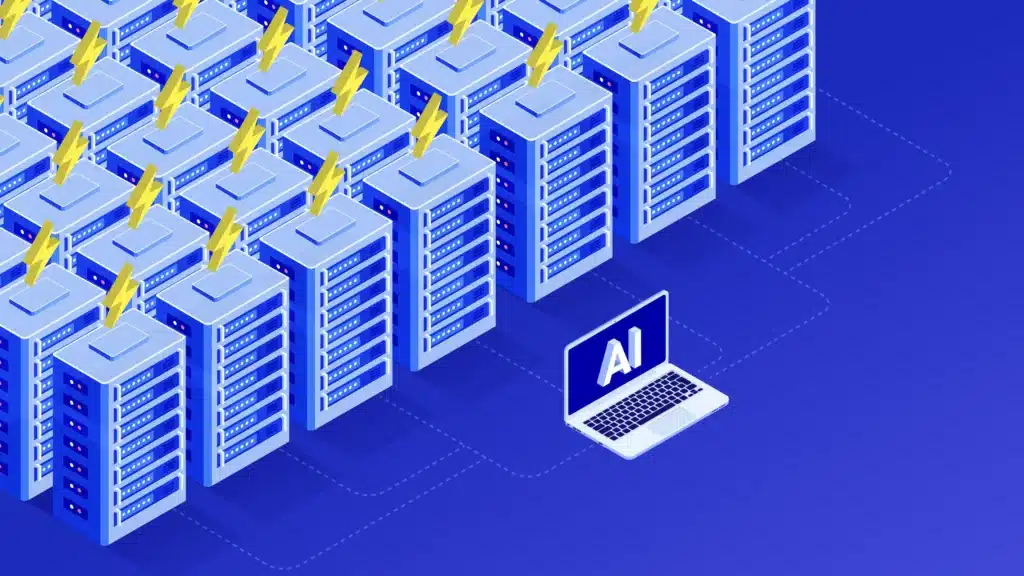Whether or not you’re ready, artificial intelligence (AI) is here to stay.
Some believe AI will help usher in the Fourth Industrial Revolution, and research from Accenture suggests that it will eventually double the annual economic growth rates in developed economies. These are enormous, world-altering claims, but they’re rooted in truth: AI will completely change how businesses operate.
What sometimes gets lost in this conversation is that AI is still just a tool — and tools are only as useful as the people and organizations wielding them. Without a well-crafted implementation roadmap and the organizational structure to support it, AI could end up causing leaders more headaches than even their most vexing business problems.
AI isn’t always a quick fix
Some executives still view AI as a silver bullet for organizational inefficiencies, and even skeptical executives don’t want to be the last ones to implement it. Driving AI-powered analytics and machine learning with big data doesn’t always create an instant competitive advantage, though.
AI offers an incredible amount of promise, but businesses need a grounded understanding of its strengths and limitations to realize its full value. However, new AI technologies are hitting the marketplace at an accelerating pace — and they saw a meteoric 270% increase in adoption over the past four years. This belies the fact that AI is rarely a plug-and-play solution for businesses.
According to a survey from McKinsey & Company, a majority of companies lack the infrastructure needed to successfully implement AI. Even the ones with technology that can support AI might still have unrealistic timelines, a lack of internal skill, or a shortage of funds needed to employ it effectively.
This doesn’t even touch on the challenges for managers: the individuals who are responsible for educating and guiding employees through digital transformations. Consider the challenge of encouraging behavioral changes in all-star employees when AI suggests more effective ways to complete processes. What happens when these key players don’t want to change?
Implementing AI isn’t impossible — and it’s surely worth the effort — but it requires looking before you leap. To avoid pitfalls, focus on these points when developing your own AI implementation strategy:
Understand AI’s limitations
If you have unrealistic expectations about what AI can accomplish, you’ll sabotage the implementation before it’s even begun. Understand that AI is only as intelligent as the data it is given; it requires huge amounts of targeted, quality data to complete tasks successfully and independently.
Take autonomous cars, for example. Self-driving technology has improved immensely as fleets of autonomous vehicles ingest copious amounts of data — but they still make mistakes. Leveraging AI within your business requires the same level of constant care and attention, and coming up with a robust data-sourcing and management plan is key to achieving high-quality results.
Identify different areas of value
There are plenty of areas where AI can prove valuable — from supply chain predictability to order fulfillment to production optimization. Starting small with quick, easy wins will allow you to explore the initial measures of the business impact of artificial intelligence. It will also help you educate teams, build momentum, and obtain buy-in from key stakeholders across your company.
The companies that genuinely separate themselves in this age will be those that can operationalize AI solutions across multiple domains throughout the enterprise. It’s essential to build success incrementally through value-driven solutions.
Address the people directly affected by AI
Data from Gallup suggests that Americans are still wary of how AI will impact their careers. After all, AI’s very nature compels it to perform “human” tasks. While some of your employees might feel undervalued or easily replaceable, others might feel the need to polish up their skill sets and compete with this emerging technology. Some might also embrace the opportunity to pursue new roles within your organization; this is made possible by reducing human needs in some departments using AI-based solutions.
For this reason, it’s crucial to talk with employees about how digital transformation — including AI implementations — will impact their roles within the company. Be sure to gauge their reactions and respond to their concerns.
Any implementation strategy should include planned AI change management and carefully optimized training. Instead of only focusing on what tasks will be automated in the near future, for instance, consider also mapping out the rewarding projects your personnel could tackle as a result. These training programs and challenging conversations will ensure you don’t lose touch with your most valuable asset: your people.
Deploy an operational model
AI-based models should revolve around the idea of iterative learning, and this is true whether you’re on the human side or the technology side. Your operational model should include (on a high level) three main components: value assessment, development pipeline, and cultural preparedness.
First, develop and iterate a framework for evaluating the right business projects to tackle. Your organization likely places value on returns beyond just dollars and cents. For example, an AI solution that improves the quality of care for a patient in a hospital might provide more value than an AI solution that optimizes the supply chain for basic medical supplies. This value drives the priority of your projects.
The second component is understanding your AI development pipeline. As your experience with AI grows, the complexity of the AI solutions required to meet your needs might grow as well. Revisiting the full development pipeline — and assessing everything from your technology stack to your in-house skill sets — is critical to ensuring your pipeline can successfully meet your business’s needs.
Finally — and most importantly — develop a cultural approach to AI, as it will impact all aspects of your organization. It can both reshape the structure of your organization and require your personnel to shift their behavior. Because these impacts are both sensitive and rewarding, they require careful planning and consideration.
Whether you rely on an off-the-shelf solution or build from scratch, you’re going to run into challenges with AI. Rely on a sound AI implementation strategy to guide decision-making, and refine this road map as you pursue new technology initiatives.






















